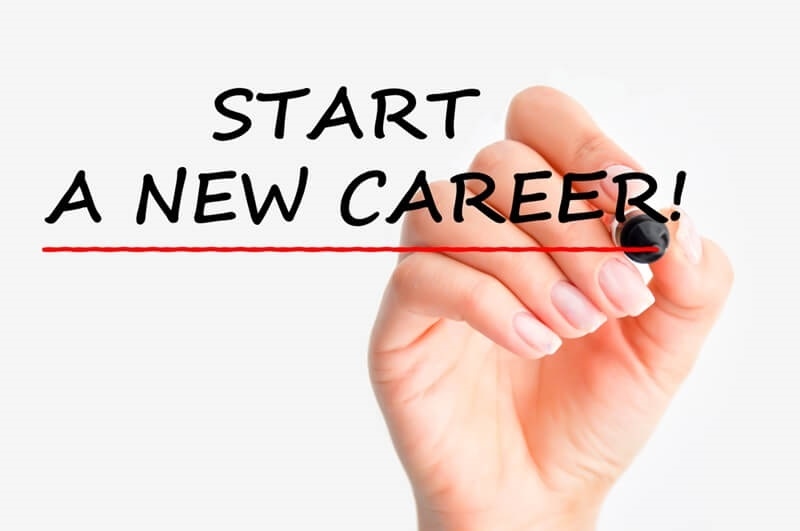
Changing careers is among the most life-altering choices you'll ever make in your career. Maybe you're walking away from a long-term job, seeking greater fulfillment, or holding out for economic fluctuations. Whatever it is, stepping into a new career is thrilling and intimidating. The good news? Anyone can successfully make the switch with the right mindset. In fact, the majority of professionals in the United States reflectively rethink their careers at least once throughout their working life, especially with the transition of industries and developing trends.
Here, let’s discuss successful career change tips so that you can make a smooth career change. Let’s dive into midlife career change strategies, new career planning, career switch preparation, transferring skills to work, and advice on how to adapt to a new career.
Let's talk about the "why" first before we move into feasible steps. Career changes are usually a mix of intrinsic and extrinsic motivators.
Search for Happiness: Most discover their current career no longer resonates with what they enjoy or cherish.
Better Work-Life Balance: Excessive work hours or stressful life force people to produce healthier balances.
Economic Shifts: Technology, healthcare, and renewable energy are growing sectors, but other industries may be shrinking.
Self-Growth: Sometimes, it is a question of leaving the safety net behind.

Whatever your reason, good career change guidance can help you make that initial step with confidence, not fear.
Everything begins with clarity. New career planning starts by asking the correct questions:
Systematic self-study may reveal opportunities you never considered. Tools like the Strong Interest Inventory or even daily diary writing of job satisfaction may scribble out patterns. For midlife career change strategies, self-reflection is particularly important. If you've had a decades-long career, unearthing long-buried passions can bring about new choices.
Understanding where the opportunities are is key. This is where career change planning stops being personal and starts being market research.
Fields such as cybersecurity, nursing, and data science are also likely to expand in the following decade. This aids you in forming realistic expectations and focusing on industries that are an investment.
Working with what you already possess is probably one of the most underutilized concepts for career change. Transferable skills for careers enable you not to start fresh.
For example:
After you have established transferable skills, transform your résumé and LinkedIn profile to reword them in the language of your new career.
Although with transferable skills, there will be instances when you must bridge the gap with new knowledge. Career transition might include upskilling:
Short Courses: Short courses on Coursera, Udemy, and edX are inexpensive certifications.
Bootcamps: Coding, UX design, and data science bootcamps are in fashion for rapid conversions.
Professional Certifications: In case of career transitions to positions like HR, project management, or finance, U.S.-certified certifications (like PMP or CPA) can prove beneficial in strengthening your profile.
Constant learning is not just for securing a new job—it also indicates to employers that you're flexible.
Maybe the least realized career change tip is making the right connections. Networking teaches you about a new line of work and prevents you from making mistakes.
Attend Industry Events: Conferences, seminars, or even meetups in your local area expose you to people in your desired career.
Use LinkedIn: Network with influencers, join groups, and send people messages for information interviews.
Ask a Mentor: A mentor in your new career area can provide critiques, guidance, and accountability.
Mentorship is more needed for midlife career change attempts. Experienced professionals will likely be helped by a candid voice wherein to put decades of experience into new jargon.
Before fully committing, test the waters. Career switch preparation can include freelancing, volunteering, or part-time projects in your chosen industry.
For example:
This method creates portfolio experience and confidence. It also provides a chance to experiment and determine if this new profession is your passion.
Career changes may require a temporary decrease in earnings. Creating a financial safety net is an important element of new career development.
For individuals with midlife career transition plans, money management is even more crucial since family and retirement plans are already on the table.
Your résumé, cover letter, and LinkedIn headline must all reflect your change. Use these resources to highlight applicable new experiences and skills transfer for employment.
How to refresh your personal brand:
U.S. employers like to look for candidates on the internet before they contact them, so being consistent in brand wherever possible is important.
Of all career change tips, perhaps the most vital is flexibility. Transitioning into a new profession demands humility, patience, and determination.
Being flexible not only gets you planted in a new career but also sends a message to future employers that you are able to work in dynamic settings.
Career transition takes a long time and, at times, can be aggravating. Being motivated to start and maintain is key. Here's why:
For those that are planning midlife career transitions, this exercise is particularly important. It is easy to get discouraged by comparing yourself to the younger job seekers, but do not lose heart.
Career transition is daunting, but with a positive mindset and proper planning, it is well within reach. From planning a career to preparing for a career transition, each move you make sets the stage for a successful career.
You do not have to ride on the backseat if you are a midlife career professional, a new graduate, or somebody learning about midlife career transition methods. Embrace these experiential career transition tips to step into the next stage of your working life with confidence.
This content was created by AI